What is djembe and how to choose it?
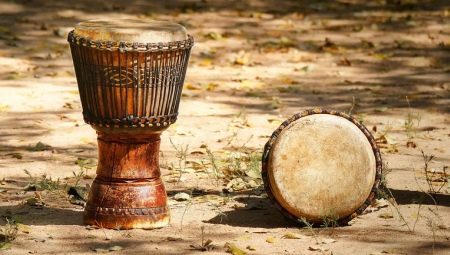
Djembe is a West African folk musical instrument. It is a cup-shaped drum, narrow at the bottom and widened at the top, over which a leather membrane is stretched. In terms of sound production, it belongs to membranophones. The sound from the djembe is made with the hands.
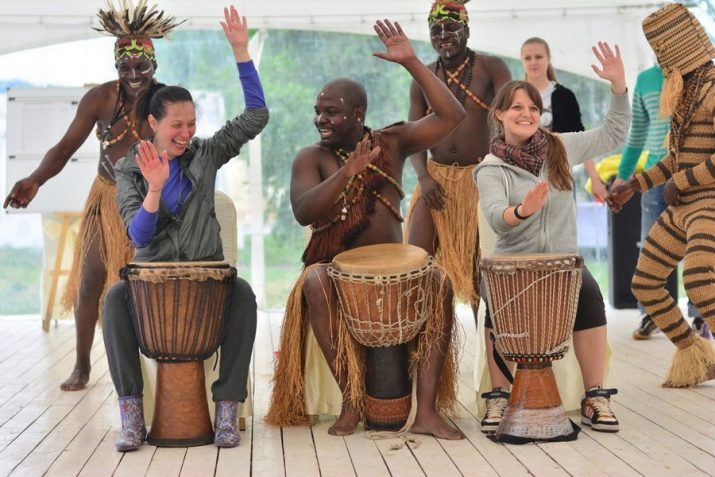
History
The homeland of Djembe is considered to be Mali, from where it spread to the west of Africa. In some places in the local tribes they still use ancient drums reminiscent of djembe. According to some historians, this hand drum came to us from Senegal.
In African tribes, being a drummer is considered very honorable. In terms of status, he is second only to the shaman and the leader himself. Often the drummer has no other responsibilities. According to data from research, the sound played while playing the djembe can be heard for 5-7 miles around. At night, the range of sound increases. Thus, the drummer can announce an event by playing the djembe, passing the drum baton from village to village.
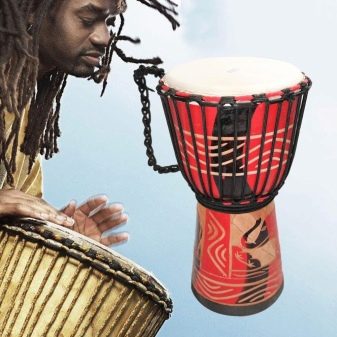
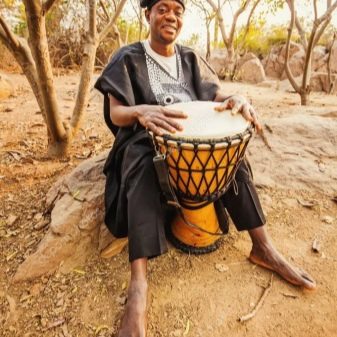
It wasn't until the middle of the 20th century that the West learned about djembe when the song and dance ensemble Les Ballets Africains began performing around the world. After that, the interest in djemba grew all the time. Now this instrument has a new peak of popularity; many musical groups include it in their ensembles.
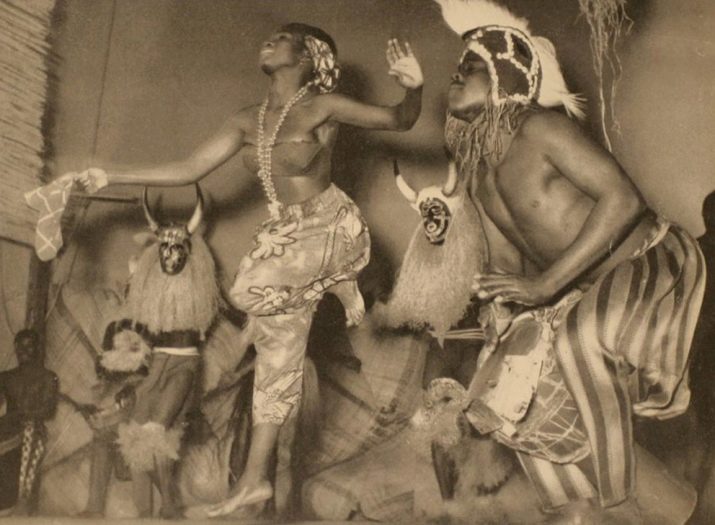
Djembe is often compared with a similar instrument, the darbuka. This is the so-called. The Egyptian tabla or dumbek is an ethnic drum, somewhat inferior in popularity to the djembe. These are not analogs, but drums with significant differences in sound and performance. The body of a modern darbuka is made of metal, and the top is not leather, but plastic. The sound is no better or worse - it is different.Traditional ceramic darbuka with goat skin top. It is a fragile tool that is more often found in the hands of a professional. Amateurs prefer to deal with the metal version.
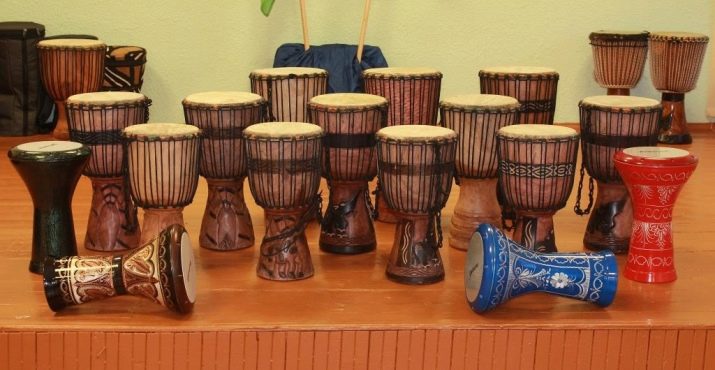
Darbuka is much smaller than djembe, its difference is that the sound is reproduced with the fingers, and not with the palms, which clearly defines the character of the instrument.
Description
A single piece of wood is used to make a djembe. The membrane is usually made from goat skin. Antelope, deer, zebra and cow skins are much less common. The surface of the leather should be durable and dense. If whitish areas are visible on it or it seems that it is thin as paper, then this is a cheap fake or a tool of the lowest quality.

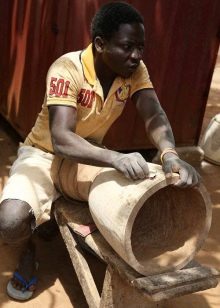
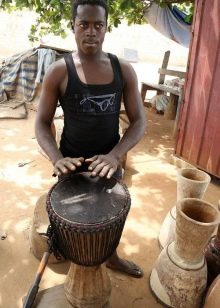
It is important that the membrane is not damaged such as cracks, otherwise there is a risk that the skin will break during operation.
The average height of the instrument is approximately 60 cm and the diameter is 30 cm. The stem and bowl of a high-quality djembe are proportional. With the help of a rope, the surface tension of the skin is regulated. Usually it turns out to be passed through metal rings or is fixed to the body with special clamps. Often the carving or painting adorns the body base.
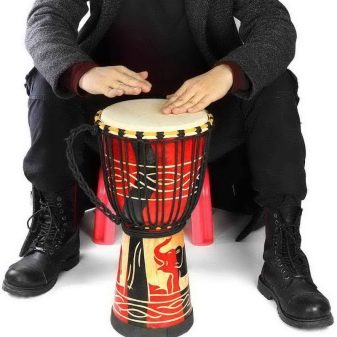
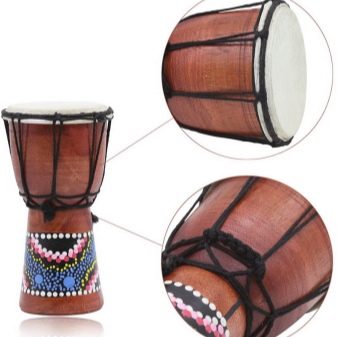
The sound hole, the so-called throat, is the narrowest place in the drum, located between the bowl and the leg. It largely determines the pitch of the bass note of this percussion instrument. The wider the djembe's throat, the lower the bass note sounds. With a very wide opening, you should expect very deep bass, and with a narrow throat, it turns out to be barely audible. The standard djembe is a solo instrument for performing a separate rhythm part, which should sound not only deep, but sonorous.
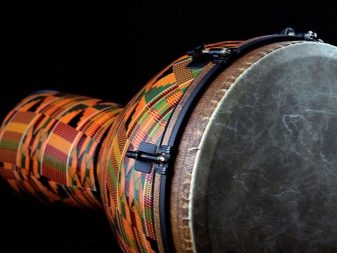
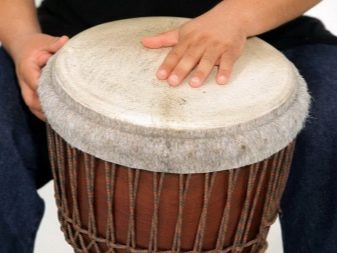
Views
Voiced fancy drums are subdivided into several types depending on the materials of manufacture and sizes.
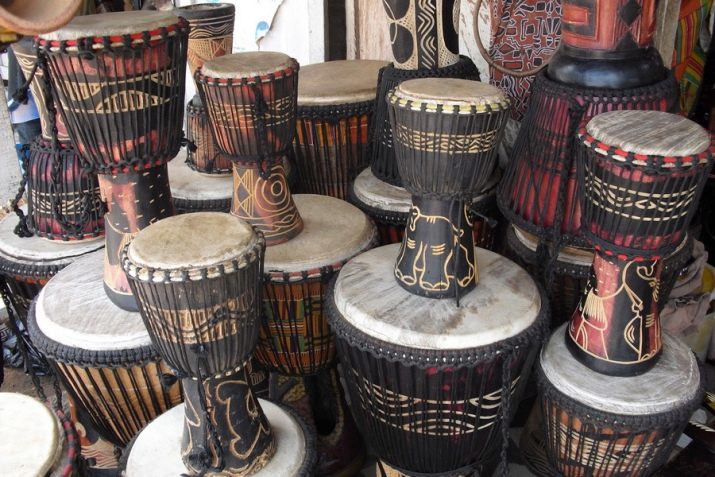
By body material
Made of plastic
Plastic djembes make a sound that is far from authentic, but quite loud. Moreover, they are light, bright, strong and do not deteriorate in high humidity. Small plastic drums sound melodic (along with large drums).
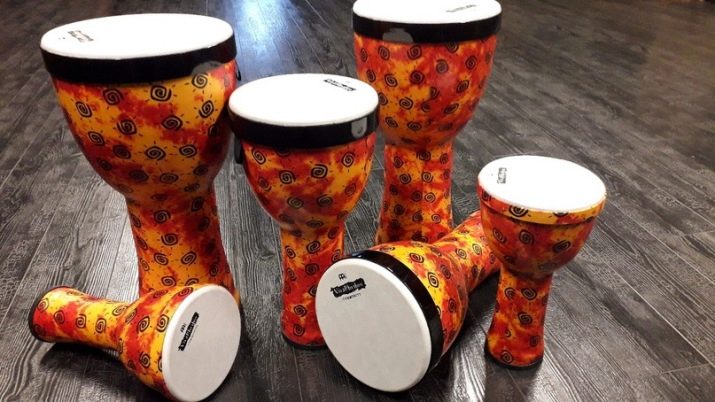
Made of wood
The sound of wooden djembe is more authentic. In fact, they differ from simple unnamed Indonesian drums only in the label and in a more consistent standard. They are classified in the amateur category. It is believed to be a very good option for beginners. The best djembe are made from hardwoods, which are diverse. They have excellent acoustic and energetic properties.
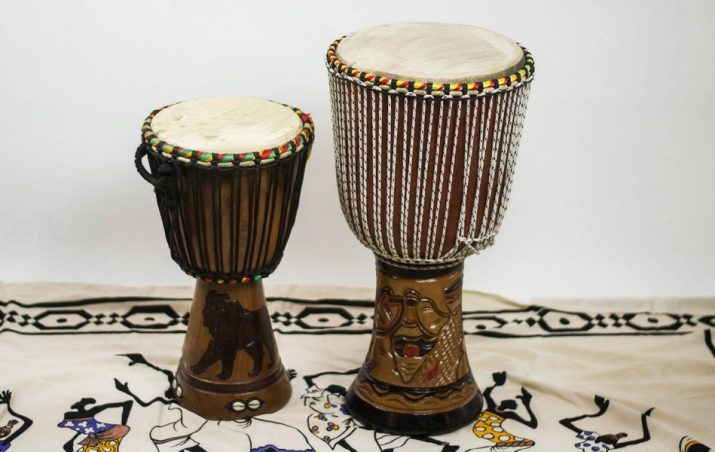
The softwood option will be much less durable.
Professional series
Neat mahogany drums. The membrane is made of thick goat skin. An excellent option for connoisseurs of status instruments, high-quality sound and impeccable design.
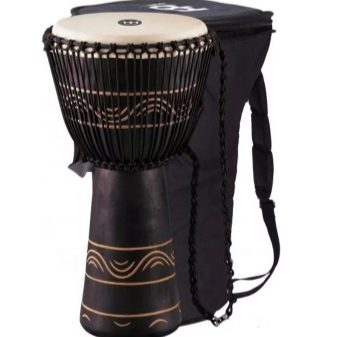
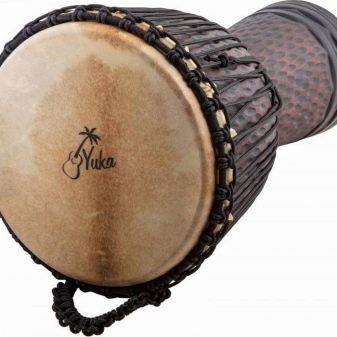
To size
8-9 inches
It was customary to call them children's, although people of any age can play miniature drums. By the way, if the instrument is small, this does not mean at all that it will be completely silent and will not be able to produce bass. If all West African rules and necessary settings are followed during the manufacture of an instrument, it sounds as it should, regardless of its size. Mini Djembes are ideal as travel tools and are easy to transport on hikes. Tool weight - from 2 to 3 kg.
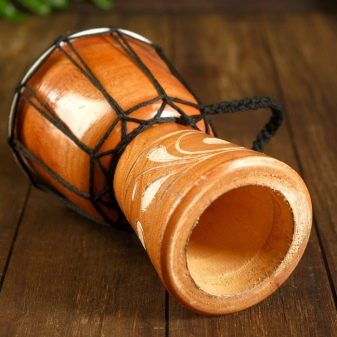
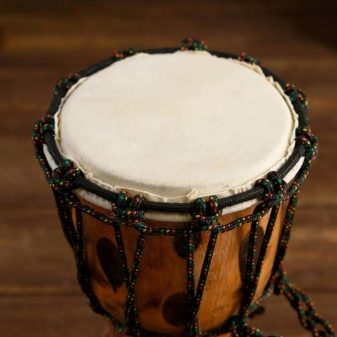
10 inch
This kind of djembe sounds good as a member of small instrumental groups. It is convenient to take it with you on walks and tourist trips. The sound of such an instrument is much better. Such a tool weighs about 4–5 kg.
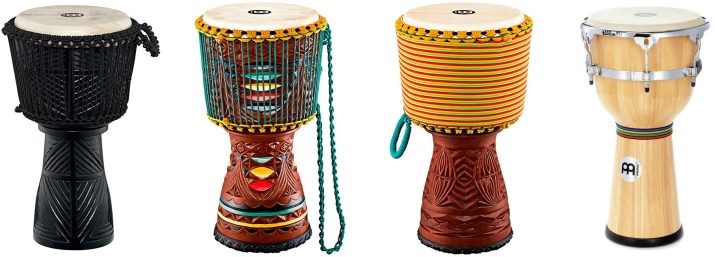
11-12 inches
This type of instrument is already more suitable for the stage, but can be used both for walking and for meeting with friends. In other words - the golden mean. The weight of the tool is 5–7 kg.
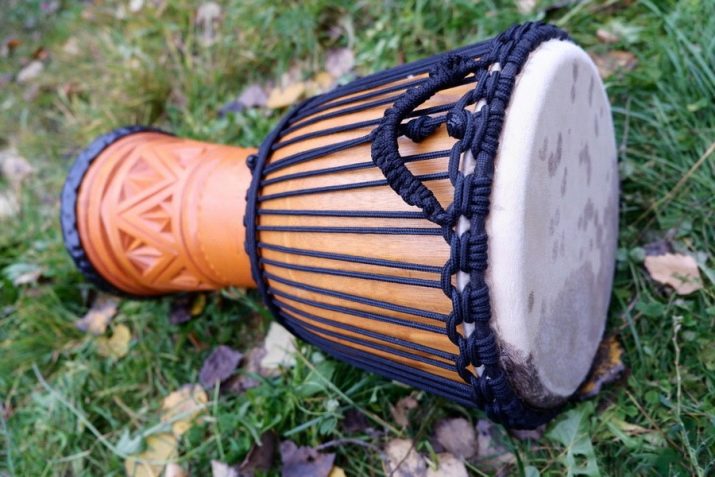
13-14 inches
A chic instrument with a powerful sound that makes glasses and dishes rattle.This is a professional-grade drum that delivers rich bass in contrast to previous djembe types. It seems to some novice musicians that the overall djembe has equivalent bass. And the larger the tool, the more obvious it is. But this is actually not entirely true. In general, the size of the instrument affects the power of the sound. Large drums have a much wider sonic range when compared to their smaller counterparts. It can be used equally by both beginners and professional musicians. The weight of a djembe of this size is 6–8 kg.
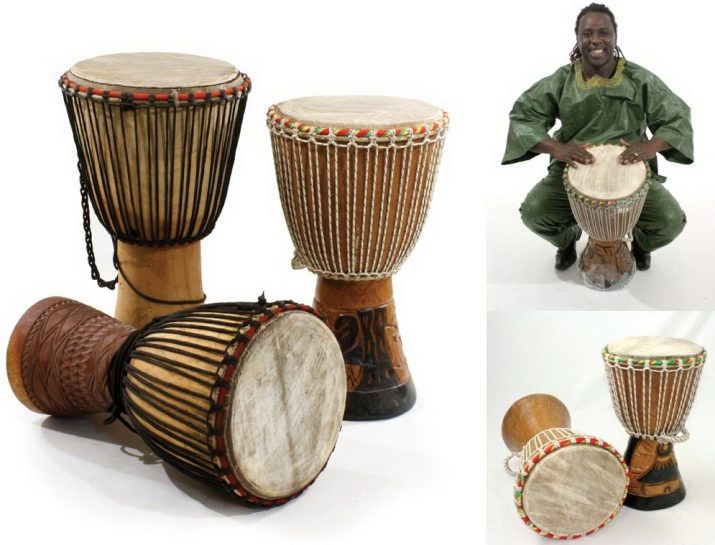
It is important to consider that the sound is influenced by how the drum is tuned. For example, a lead djembe has a very taut diaphragm, resulting in high treble and quieter bass. If a lower sound is needed, the striking blade is lowered.
Accessories
For transporting and storing the djembe, you will need a secure case. The best option is a product made of practical and durable nylon with a comfortable carrying handle and padded shoulder straps. Such covers are sewn on a conveyor belt. For the sake of an exclusive item, you will have to get a little confused and find someone who makes custom-made covers. Usually piece things are sewn from teza - a sealed synthetic material. It belongs to awning fabrics, made on the basis of polyester and PVC. The coating can be applied on one side or on each side.
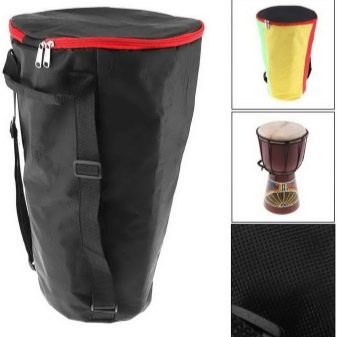
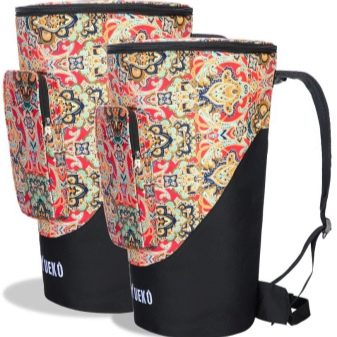
For convenience while playing the djembe, many people prefer to purchase an instrument stand. They are made of metal, the structure has three stable legs, tilt angle and height adjustment. Sometimes the stand is recommended for beginners, and in some cases it is purchased by professional djembe players. It all depends on how convenient it is to use this accessory for each specific person. They choose according to cost and quality based on their own financial capabilities and preferences. Various brands offer a wide range of products of this kind.
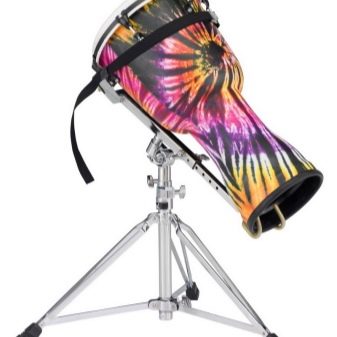
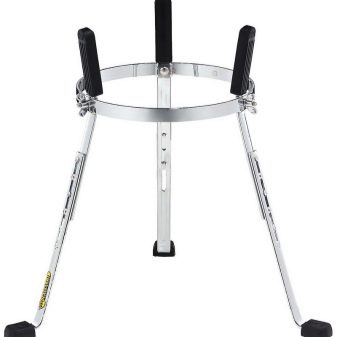
How to choose a tool?
A novice djembe music performer will surely need these recommendations.
- Assess the look and size. The drum should be aesthetic pleasure.
- Proper shape is one of the most important factors to look for when choosing a djembe, but for beginners it is also one of the most difficult parameters to choose from.
- Try the drum by weight. There can be significant weight differences between 2 reels of equal size.
- The skin should be thick and firm. If it looks white, thin and looks like paper, then it is a cheap souvenir. There should be no tears or cuts on the skin that can crack when pulled. Transparent areas are also undesirable, since these can be defects or places where hair is removed with bulbs, which does not affect anything. But scars are completely undesirable.
- Small cracks in the area of the stem do not affect the sound. If they are large and located on a bowl (mainly through) or a stem, this is considered a marriage that distorts the sound and negatively affects its strength.
- The edge around the circumference should be even, without dents or sharp edges, so as not to damage the skin of the fingers. On souvenir Indonesian djembes, it is cut without rounding, which is very bad.
- It is important that the rope looks like a cable, not a string. If in a djembe the lower metal ring is replaced with a rope, this is a sure sign of marriage. A drum like this would not be perfectly tuned. Even a professional djembe cannot handle a cheap Asian copy. The lower ring can be made of reinforcement, the rope can be changed, but the result is unlikely to please.
- It is better to refuse to buy a djembe drum if it has a too narrow bowl with a long stem, as well as a wide bowl with a short stem.
- Soft wood is the least suitable for making djembe. If there is a recess from the nail on the body, then the wood is too soft, and this is a bad choice.

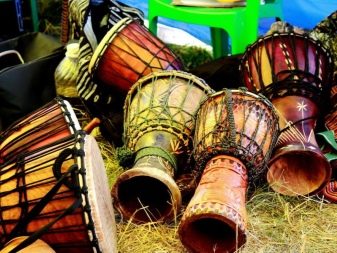
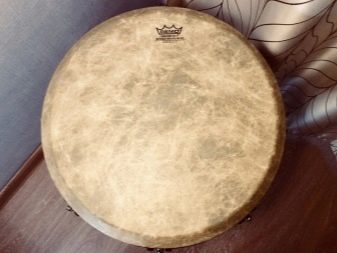
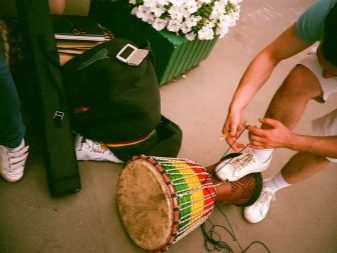
How to play?
Since the djembe is a very loud instrument, playing it releases a lot of energy and energizes the musician. Such a drum will surely be appreciated by lovers of active, cheerful dances. It will also appeal to those who like strong and active body movements, since the djembe is played with two hands, using them from elbows to palms. On a djembe, drumming is performed while standing, hanging the instrument on a stand or special belts, holding it between the legs.
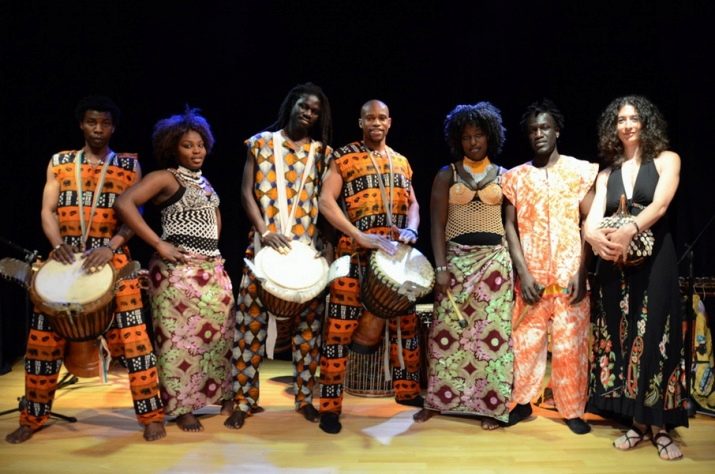
Sometimes musicians prefer to make music sitting on top of a lying drum, but with this method there is a risk of damaging the fastening rope, contaminating the membrane, especially since the djembe body is not designed for serious loads and can crack.
Djembe has three tones of music: slap, low and high bass. Hitting the center of the diaphragm produces deep bass, closer to the rim, a high-pitched sound, and a light knock on the rim produces a slap.
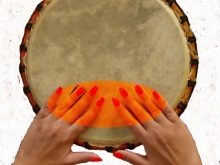
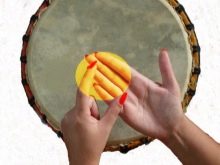
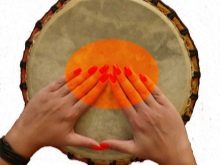
How to choose a djembe, see the next video.








